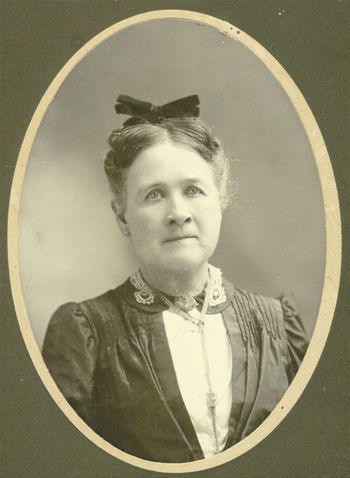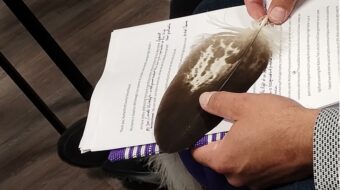
Lucy Hobbs Taylor, née Lucy Beaman Hobbs, became the first American woman graduate of dental school 150 years ago, in February 1866. Born March 14, 1833, in Constable, N.Y., in the heart of the Adirondack Lake region a few miles from the Canadian border, she was the seventh of ten children. She studied at the Franklin Academy in neighboring Malone and graduated in 1849. She quickly obtained a position as a schoolteacher in Michigan, one of the few jobs a woman could obtain.
But Lucy always wanted to be a doctor and took every opportunity to read up on medical science. She taught school for ten years, her interest in medicine only growing stronger. In 1859, Hobbs relocated to Cincinnati, home of the Eclectic College of Medicine, the sole medical college that had accepted women. She applied for admission only to be rejected: The school had reversed its admission policy and was no longer admitting women.
Undeterred, Hobbs found a professor from the Cincinnati medical school who was willing to tutor her, and she studied with him privately. Recognizing her aptitude and the medical establishment’s antipathy toward female students, he suggested she consider dentistry. The dean of the Ohio College of Dental Surgery was willing to take Hobbs on as a private student, and he later helped her secure an apprenticeship with a graduate of the college. After her apprenticeship, Hobbs applied to the Ohio school of dentistry, but despite her qualifications she was refused admission – again because of her gender.
Hobbs decided to strike out on her own. In the spring of 1861, the 28-year-old opened a dentistry practice without a diploma, as was common practice. The following year she moved her practice to Bellevue, Iowa, and then to McGregor, Iowa. The locals referred to her as “the woman who pulls teeth.” In the summer of 1865, Hobbs was elected by her male colleagues to the Iowa State Dental Society, the first professional dental organization to accept women. Acknowledging her as their peer, the Society members sent Hobbs as a delegate to the American Dental Association’s convention in Chicago.
After treating patients for four years, and with the support and respect of the Iowa State Dental Society, Hobbs finally gained admission to the senior class at the Ohio College of Dental Surgery, the second dental school in the nation, in November of that year. In February 1866, Hobbs became the first woman in the nation to earn the degree of Doctor in Dental Surgery. She later wrote, “People were amazed when they learned that a young girl had so far forgotten her womanhood as to want to study dentistry.”
Despite the dominance of male chauvinism in the professions, the general population seemed to clamor for a woman’s touch. The Cincinnati Dental Reporter reflected this attitude in an editorial it ran shortly after Hobbs’ graduation: “Even now we almost imagine ourselves seated in what is usually termed the ‘chair of torture’ – dreaded now no more – by our side a beautiful lady, with sweet breath and glowing cheek, her delicate arm encircling our head, …eyes, so tender in their gaze – they take away all dread, and in their sympathy even divide the pain itself.”
Hobbs next moved to Chicago, where she met a Civil War veteran, James M. Taylor, who had been working as a railway maintenance laborer. They married in April 1867, and she became Lucy Hobbs Taylor. She convinced her husband to also enter dentistry. The two then moved to Lawrence, Kan., where they ran a successful joint practice with a particular focus on women and children.
Following her husband’s death in 1886, “Dr. Lucy,” as she was known to her patients, largely retired from medicine, yet she continued to participate in social and political issues in the Republican Party, including the fight for women’s suffrage. She continued a limited practice of dentistry until suffering a fatal stroke on October 3, 1910, at age seventy-seven.
“I am a New Yorker by birth,” wrote Dr. Lucy Hobbs Taylor. “But I love my adopted country – the West. To it belongs the credit of making it possible for women to be recognized in the dental profession on equal terms with men.” She gained the respect of her colleagues, her patients, and countless women whose professional aspirations loomed within reach, thanks to her pioneering work. Her obituary in a local newspaper remembered her as “one of the most striking figures of Lawrence [who] occupied a position of honor and ability, and for years she occupied a place high in the ranks of her profession. Dr. Taylor was a great charitable worker and did much good in a quiet, unobtrusive manner.” Lucy Hobbs Taylor and her husband are buried in Lawrence’s Oak Hill Cemetery.
By 1900, almost one thousand women had followed Lucy Taylor into dentistry, an increase many attribute largely to her pioneering accomplishments. According to Department of Labor statistics, in 1999 women accounted for less than 17 percent of all dentists. Two years later, an American Dental Association survey found that women comprised 37 percent of dental school graduates, and that number has grown since.
Beginning in 1983, the American Association of Women Dentists has honored outstanding women in the dental profession with the Lucy Hobbs Taylor Award, the most prestigious recognition the organization bestows, for contributing “to the advancement, enrichment, and betterment of the role of women in the field of dentistry through their achievement in civic, cultural, humanitarian and academic areas.”
Sources: Encyclopaedia Britannica, Wikipedia, Gale Biography in Context, Kansas Historical Society.
Photo: Lucy Hobbs Taylor, Kansas Historical Society.

MOST POPULAR TODAY


Zionist organizations leading campaign to stop ceasefire resolutions in D.C. area

High Court essentially bans demonstrations, freedom of assembly in Deep South

Afghanistan’s socialist years: The promising future killed off by U.S. imperialism

Communist Karol Cariola elected president of Chile’s legislature






Comments